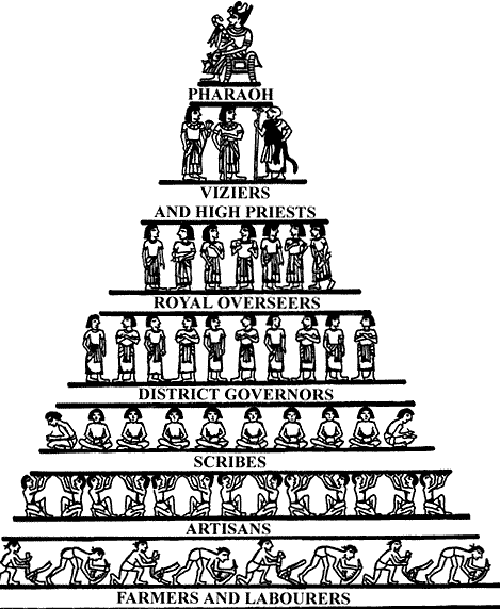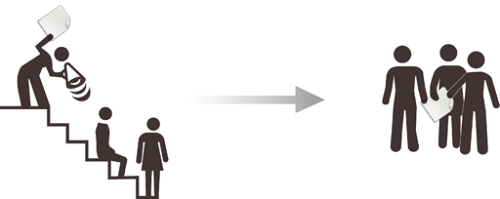Difference Between Centralization and Decentralization
The terms centralization and decentralization refer to the political and administrative structure of a country. In a centralized state, the power and the authority are concentrated in the hands of the central government, which takes decisions and performs most functions. Conversely, in a decentralized state, power and responsibilities are dispersed and distributed across regions and areas. While all centralized governments have common features and similar characteristics, not all decentralized countries are the same. In fact, the decentralization process may vary from country to country and may be implemented in different ways. For instance, the degree of autonomy of regions and local authorities varies a lot. Both the United States and China use a decentralized approach, but the outcome is very different. The single states in the U.S. have a large degree of autonomy while Chinese regions remain under strict control of the central government.
What is Centralization?
In a centralized country, power and authority are concentrated in the hands of the central government while regions and local authorities have little to no power. In many cases, a centralized government is linked to the idea of an authoritarian regime that does not allow for public and democratic participation. However, this is not always the case. While military and dictatorial regimes try to concentrate the power in the hands of few, there are several democratic and high-functioning countries, like Denmark and Norway, that use a centralized model. Centralization has many advantages:
- It is a very efficient system;
- The decision-making process is quick and effective;
- There are no duplications – and, therefore, the bureaucratic apparatus is better functioning;
- It promotes equality across the country as decisions taken at the central level usually apply to all regions; and
- It promotes the emergence of a unified, national economic system.
What is Decentralization?
In a decentralized system, power, functions and authority are distributed among local authorities and entities and are not concentrated in the hands of the central government. The power can be divided among regions, provinces or even cities – every country and every decentralized system has different features and the degree of autonomy of the various areas can vary. Decentralization is often seen as the response to the problems linked to a centralized government (i.e. lack of public participation, excessive control, economic decline, etc.). In fact, this system has various advantages:
- It limits (or avoids) the risks of excessive concentration of power;
- It can enhance economic development;
- It ensures broader political participation;
- It triggers political innovation;
- It promotes the creation of policies tailored to the needs of individual regions; and
- It respects ethnical and cultural diversities.
Similarities between Centralization and Decentralization
Centralization and decentralization are opposing concepts. In one case, the power is in the hands of few, whereas in the other authority and functions are distributed among a larger number of players. Despite the various differences between the two, we can identify some similar aspects:
- In both cases, the central government maintains a certain degree of control. In fact, in decentralized countries like China, local authorities are under close supervision of the central government and their powers are limited;
- Both centralization and decentralization are not limited to the governance. The two terms can refer to centralization and decentralization of political entities, administrative bodies, security forces, economic authorities, and social groups; and
- Both systems can be effective in promoting economic growth and political stability.
Difference between Centralization and Decentralization
Centralization and decentralization are two very different processes that can shape a country in different ways. In a centralized state, the decision-making process becomes the responsibility of few people and is in the hands of the central government. Conversely, a decentralized state seeks the participation of local authorities and governmental entities. Yet, it is worth noting that a centralized state is not necessarily an authoritarian or despotic state and, in the same way, a decentralized system does not necessarily entails a higher degree of public participation. Both systems have advantages and disadvantages, and some of the main differences between the two include the following:
- The process of centralization can be initiated for various reasons: some governments believe that a higher degree of control over the country’s political and economic system can bring about economic growth, order and prosperity. Conversely, other governments initiate the process of centralization in order to exert a higher degree of control over the population and to limit local and public freedoms. The process of decentralization, instead, necessarily brings about more local and regional autonomy while the power of the central government can be slightly reduced. Decentralization can be the result of political and economic crisis, or can be based on explicit policies and intentions; and
- If we think about efficiency, we may believe that a centralized government is capable of taking and implementing decisions in a much quicker way, as the bureaucratic process is shorter and faster. Yet, although decisions may be taken more quickly, they may not be customized to needs of the population. Conversely, in a decentralized state, decision makers are closer to the broader population and are, therefore, able to identify regional and local needs – thus promoting more useful and effective laws and bills.
Difference between Centralization and Decentralization
In today’s world, we can identify many examples of centralized and decentralized countries: Denmark, Norway and the UK fit in the first category, whereas Switzerland, the US and China are decentralized states. Building on the differences outlined in the previous section, we can identify few other features that differentiate the process of centralization from its opposite.
Centralization vs Decentralization with the comparison Table
| Centralization | Decentralization | |
| Ethnic diversity | A centralized government often ends up overlooking the specific needs of smaller and local communities. Being distant from the population, decision makers often overlook the importance of accounting for ethnic diversity and of promoting cultural integration and equality. | In a decentralized system, decision makers are often able to target ethnic minorities and smaller communities with their laws and bills. A decentralized model can better serve diverse interests. |
| Participation | A centralized system does not necessarily exclude public participation – although it is easier for the government to take and implement decisions without having to go through public scrutiny. | A decentralized system is often believed to enhance and promote public participation. Yet, this is not always the case – for instance, China is a decentralized one-party system, in which the communist party maintains strict control over the population and all public decisions. |
| Conflict resolution | A centralized government may lead to local and regional unrest when local communities are unhappy or feel neglected by the central policies. At the same time, a centralized government is often in a better position to handle negotiations with third parties and other countries. | In a decentralized state, social and regional unrest is better handled as decision makers are closer to the broad population. Yet, at the same time, a decentralized government may have less leverage in dealing and negotiating with third parties and foreign countries. |
Summary: Take home message on the Centralization vs Decentralization
Centralization and decentralization are two processes that deeply affect the political, social and economic aspect of a country. In a centralized state, the power is in the hands of the central government, but this does not necessarily translate in an authoritarian or despotic regime. Many western democracies use a centralized system in order to limit duplications and avoid wasting money in useless bureaucratic processes. A centralized state has many advantages (i.e. efficiency, rapidity, etc.) but, at the same time, has various disadvantages. The centralization of power is often seen as a reduction of public participation, and the centralized government is often blamed for political and economic failures.
In a decentralized state, functions and responsibilities are (not always equally) distributed among regions, towns and local authorities. The decentralized system is often thought to enhance public participation and equality, as decision makers are closer to the population and can propose and enact customized laws and bills to address the specific needs of local communities and minority groups. The process of decentralization can start after major political and economic crisis or can be the result of explicit policies. In fact, various countries – such as the UK or Spain – have been increasing the degree of autonomy of local regions and areas in order to promote equal growth.
Centralization and decentralization are two very different process – but scholars and practitioners have not been able to determine whether one is better than the other. Not all centralized countries are the same, and not all decentralized countries are alike. The centralized system is better fit for small countries, whereas the decentralized model is ideal in the case of large and very diverse countries like China or the United States.
- Difference Between Michelle Obama and Melania - January 29, 2019
- Difference Between Trump and Modi - December 4, 2018
- Difference Between Carbon Tax And Cap And Trade - December 4, 2018
Search DifferenceBetween.net :
 Email This Post
: If you like this article or our site. Please spread the word. Share it with your friends/family.
Email This Post
: If you like this article or our site. Please spread the word. Share it with your friends/family.
1 Comment
Leave a Response
References :
[0]Bardhan, Pranab. "Decentralization of governance and development." The journal of economic perspectives 16.4 (2002): 185-205.
[1]Hutchcroft, Paul D. "Centralization and decentralization in administration and politics: assessing territorial dimensions of authority and power." Governance 14.1 (2001): 23-53.
[2]Lockwood, Ben. "Distributive politics and the costs of centralization." The Review of Economic Studies 69.2 (2002): 313-337.
[3]"Image Credit: http://learn.e-limu.org/topic/view/?c=45"
[4]"Image Credit: https://commons.wikimedia.org/wiki/File:From_hierarchy_to_decentralisation_400px.png"




No problem